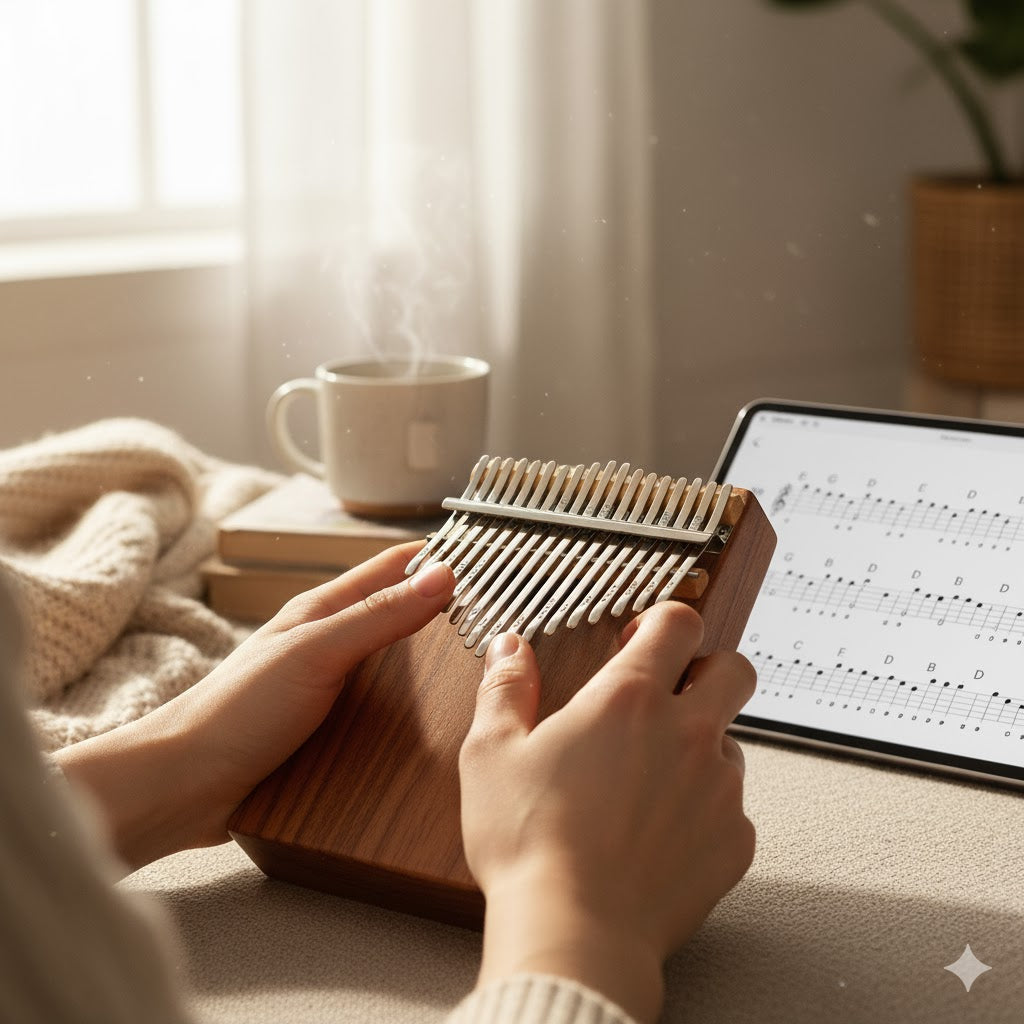🚀 Ten Minutes to Play the "Thumb Piano": A Complete Beginner's Guide to the Kalimba

The Kalimba, also known as the "thumb piano," has quickly become a new favorite for relaxation and learning instruments, thanks to its ethereal, healing sound and incredibly low barrier to entry.
Have you just acquired a beautiful Kalimba but don't know where to start? Don't worry! This complete beginner's guide to the Kalimba will take you from zero to basic playability in ten minutes, providing you with the most popular beginner tabs to start your musical journey immediately!
1. 🔍 Get to Know Your Kalimba (Anatomy of Kalimba)
The most common Kalimba model is the 17-key in C major. To facilitate playing, the tines (keys) are arranged in a unique way:
-
Pitch Arrangement: The center tine is the lowest note (usually C4), and the pitch alternates and increases outwards from the center.
-
Alternating Design: Odd-numbered notes (1, 3, 5...) are on the left side, and even-numbered notes (2, 4, 6...) are on the right. This alternating pattern is the unique charm of the Kalimba, making it easier to play fluid melodies by alternating your two thumbs.
-
Note Markings are Key:
-
Low Octave: Usually numbers 1 through 7.
-
Middle Octave: Numbers marked with one dot (e.g., 1∘ to 7∘).
-
High Octave: Numbers marked with two dots (e.g., 1∘∘).
-
👉 [Beginner Tip]: If your tines are not marked, it is highly recommended to use the stickers provided in the packaging. This is your only reference for reading music!
2. ✨ Proper Holding and Sound Technique
The correct way to hold and pluck is essential for producing a clear, full sound.
A. Perfect Posture (How to Hold)
-
Secure Support: Use your palms and the rest of your eight fingers (index, middle, ring, and pinky) to firmly support the sides and bottom of the instrument.
-
Thumb Freedom: Ensure both of your thumbs can freely move up and down to pluck the tines without restriction.
-
Advanced Control: Some Kalimbas have one or more vibrato holes (sound holes) on the back. While playing, you can gently cover or uncover these holes with your index or middle fingers to create a "wah-wah" effect, adding richness and variation to the tone.
B. Core Plucking Technique (Plucking Technique)
-
Fingernails are Essential: Make sure your thumbs have fingernails at least 2-3 mm long.
-
The Plucking Motion: Place the tip of your nail on the end of the tine, then quickly "hook" the key downward and inward before releasing it. This motion must be quick and clean for the key to vibrate fully and produce a crisp, bright sound.
-
Avoiding Buzz: A slow pluck or very short nails can cause a "hushing" or buzzing sound. Practice to find the perfect point of contact between your fingertip and nail.
3. 🎼 Understanding Kalimba Tabs: Numbers Are Your Guide
The most common notation for the Kalimba is Number Tablature (or "tabs"). It directly corresponds to the markings on your tines, making it very intuitive.
| Symbol in the Tab | Corresponding Kalimba Tine | Meaning |
| 1, 2, 3... | Pluck the tine with that number | Basic notes, usually in the lower octaves. |
| 1∘,2∘,3∘... | Pluck the tine with one dot above the number | Notes in the middle-high octave. |
| 1∘∘ | Pluck the tine with two dots above the number | Notes in the highest octave. |
| (1-3-5) | Pluck these three tines simultaneously | Play a chord. |
| _ | Follows a note | Indicates the note is sustained or held. |